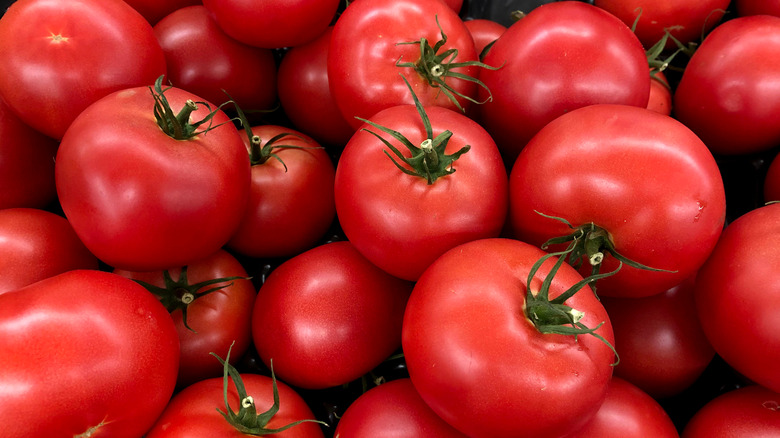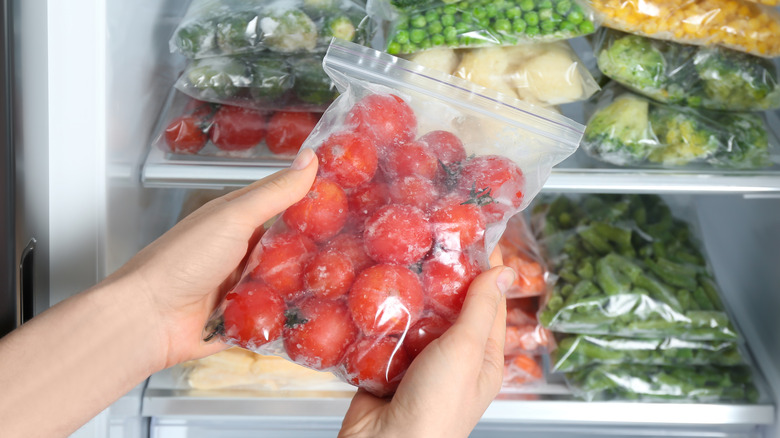What You Need To Know About Freezing Tomatoes
Whether you have a garden or love summer vegetables and fruits, the summer is likely one of your yearly highlights because so many of these foods are in season and harvested during this time. Tomatoes ripened on the vine are a splendid and delectable sign of the summertime heat, offering an opportunity to taste them as nature intended — full of flavor and variety.
So when the season begins to fade into fall and you still have tomatoes growing in your garden or you can still find them at the farmers market stalls, you may be wondering about the best way to preserve a taste of summer, so you can enjoy them during the cooler months when they're no longer in season. Make sure you head to the market before tomatoes are swapped out for colder weather produce, such as beets, cauliflower, and cabbage, per Gardeners Path.
You can freeze tomatoes, so you can use them later for a variety of recipes. Also, you can use them to whip up a batch of stewed tomatoes or make a tomato sauce and then freeze it. Like with most vegetables and fruits, there are preferred methods to how you freeze tomatoes. Once a tomato has been frozen, you won't be able to thaw it and slice it up to add to a salad or sandwich because it will be mushy, but you can use tomatoes for a sauce or add to a stew.
Different ways to freeze tomatoes
There are different ways you can freeze fresh tomatoes. If you plan to freeze whole tomatoes, you'll first want to wash them, then make a cut in the shape of an X before blanching them, usually for about 30 seconds, so the skins come off easily, according to Food and Wine. Then, you place them in ice-cold water to make it easier to take off the skins. Either whole or sliced, put the tomatoes in glass quart jars or other containers that can go in the freezer. Leave about an inch of room in the jar or container to protect them from freezer burn, per Food and Wine.
Another option is to make stewed tomatoes, which follows the same steps, but you'll cook the tomatoes first before preparing them for the freezer. Freezing stewed tomatoes reduces the chances of freezer burn, which is caused by exposure to oxygen, according to Food and Wine. Since there is more liquid after they have been cooked, the tomatoes are better protected and preserved.
But if you prefer an easier method, you can just rinse tomatoes and toss them in a plastic bag as is and use them as you need, according to TheKitchn.
Now, you have several options on how to freeze tomatoes, so you can extend the summer season a bit longer in your home.

